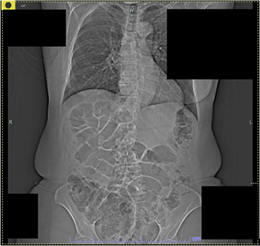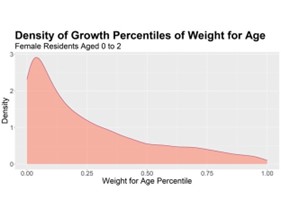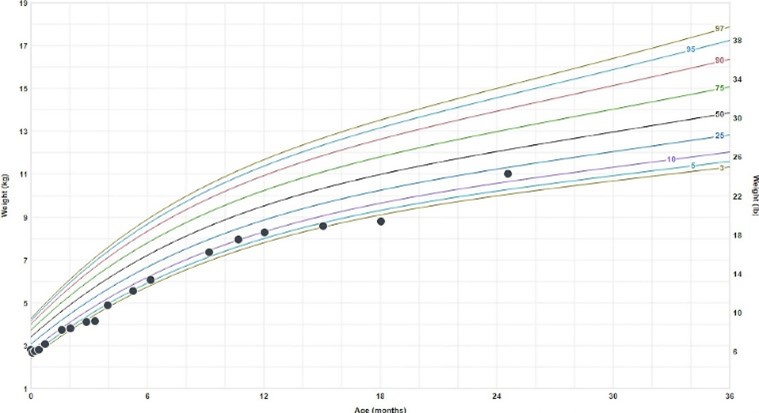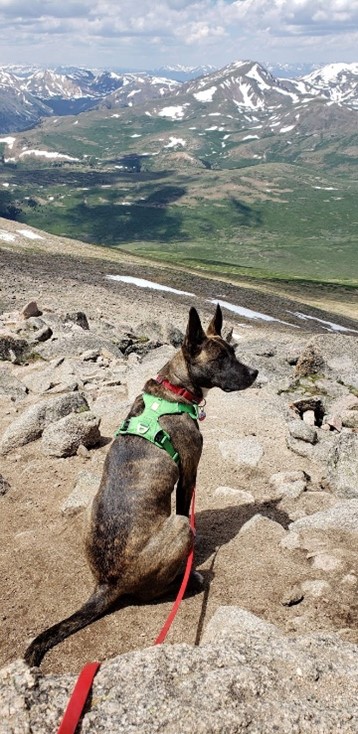Altitude medicine is a niche of knowledge and theory/speculation lacking widespread accessibility. A Delphi study of altitude experts sought to define the minimum knowledge travelers to altitude need to avoid serious health problems. But what do providers and residents at elevation need to know? Mountain residents face largely unrecognized and potentially life -threatening complications from their hypoxic environment. Examples include undiagnosed cardiac shunts predisposing patients to high altitude pulmonary edema (HAPE), hypobaric pressure aggravating ileus (see image 1) in patients with myasthenia gravis, and the inflammation of respiratory infections interacting with the hypoxic environment leading to reentry HAPE and high-altitude resident pulmonary edema (HARPE).

Image 1: Markedly distended intestines in a patient with ileus associated with myasthenia gravis
Infants born at altitude are smaller, likely to use oxygen for weeks or months after a normal birth, and grow on a curve shifted downwards from standard charts for the first two years (see images 2 and 3).

Image 2: Growth density chart with cluster of values in lower 25th percentile. (Highaltitudehealth.com)

Image 3: A typical growth pattern of a high-altitude infant. (Highaltitudehealth.com)
Because this is not published and providers and parents remain ignorant about the data regarding growth at altitude, these infants are labeled as failing to thrive and hospitalized for intense feeding interventions and evaluations by gastroenterologists and endocrinologists.
Most high altitude research is conducted at academic centers in large cities, few of which are actually located at altitudes above 2500m. Teams of scientists and clinicians travel to locations to conduct studies and compile data to be analyzed and published. Providers in clinics at altitude typically do not have the staff to assist in collecting, analyzing, and preparing their observations for publication.
The entire process of proposing a new theory, convincing the status quo, and printing an article may take 10 years. Meanwhile conditions exacerbated by hypoxia continue to compromise the quality of life for residents and visitors alike. Even the most conscientious urban internist treating a patient with high blood pressure who lives 90 miles away in the mountains will not know that the person treated with pills actually needs oxygen instead. In unpublished observations, cardiologist Warren Johnson found that the prevalent nocturnal hypoxemia above 2500 m activates the sympathetic nervous system causing the systemic hypertension and potentially silent pulmonary hypertension.
Highaltitudehealth.com was started in 2014 to address the issues of physicians advising travelers and residents. The blog format can publish original research, journal article reviews, interviews with altitude physicians, personal experiences, testing resources, emerging theories, ongoing or proposed research studies, and treatment recommendations. Readers can respond with questions or their own experiences with the topic under consideration. From complex topics such as genetics and epigenetics to simple interventions like caffeine and oxygen, both laypersons and professionals can find accessible information to consider and apply to their individual circumstances and symptoms. Popular blog entries promoting well-being include Dogs At Altitude (see image 4) and The Physics of Disc Golf at Altitude. Scientific studies of the benefits of hypoxia, along with epidemiologic evidence of decreased incidence of certain diseases such as cancers or myocardial infarction are encouraging to families choosing to live in mountain communities.

Image 4: Ike at Mt. Bierstadt. (Roberto Santos)
Every clinician and researcher has unique experiences and knowledge that integrates their observations, leading to new conclusions about the best way to diagnose and treat conditions in their clinic or lab. Avenues of readily sharing these will benefit us all.